
When the moon is just overhead, and her light illuminates millions of stars, flickering in the distance, many just born, and others slowly dying, we see the true vastness of this universe in which we live. To truly understand the massiveness of it, just take a look at our own Galaxy, the Milky Way, a swirling sea of planets and stars. Despite the distance that separates us from these other residents of the Milky Way, we can get a perfect view of its beauty from different parts of the world.
The travel blog Capture the Atlas is known for frequently publishing numerous gorgeous pictures of the Milky Way, and editor Dan Zafra has pulled together this ultimate collection. These perfect photographs of the Milky Way were taken from iconic remote places across the world, from Africa to Antarctica, and they capture every luscious detail of the cosmos in vivid color.
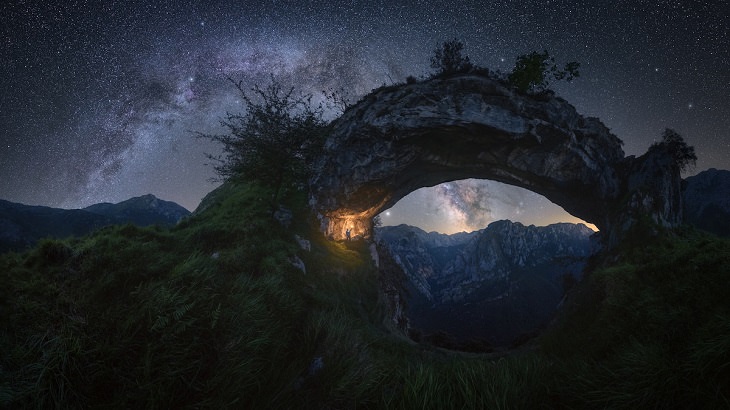
“At first, my initial idea was to capture the galactic center inside the arch, but finally, I decided to shoot the two arches overlapped at this time of the year (late spring) when the Milky Way is still not too high in the sky.”
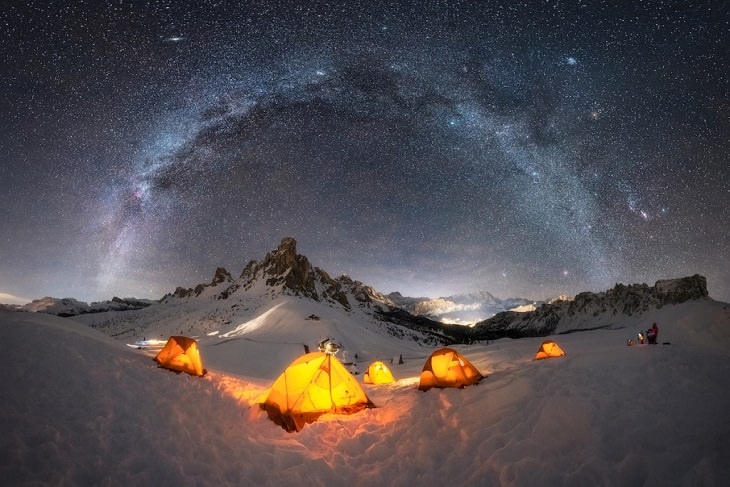
“I love shooting the Milky Way throughout all 12 months of the year. I must admit that during the winter season, it fascinates me even more, probably because the Milky Way has cooler colors that combine perfectly with the snow, and also because shooting under these conditions is much more challenging.”
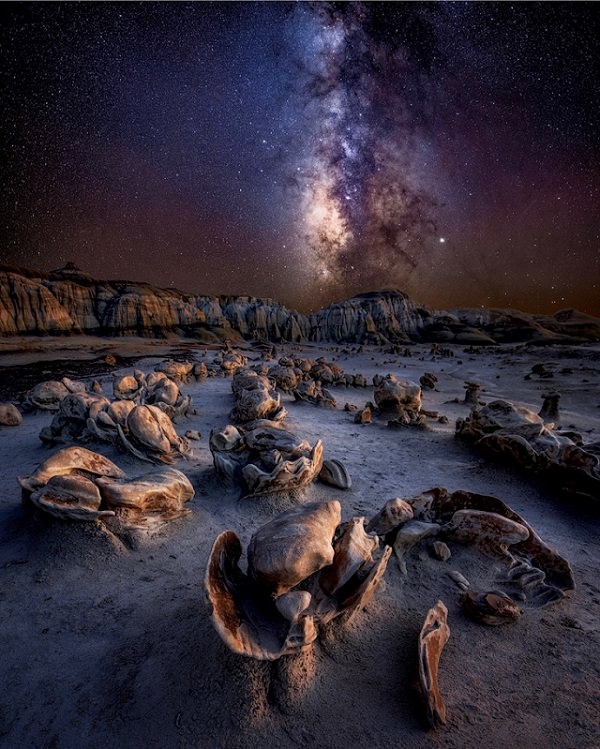
“The Badlands of New Mexico are otherworldly and mysterious. They resemble an alien planet. If you don’t believe in aliens, you will after seeing this place. This is not an easy terrain to navigate, and it is very easy to get lost. Luckily, my friends knew the area well, and we could enjoy this photographer’s paradise of endless compositions that blew my mind! This was shot last October on a two-week photo tour with friends through the Southwest. It was the best way to end the Milky Way season.”
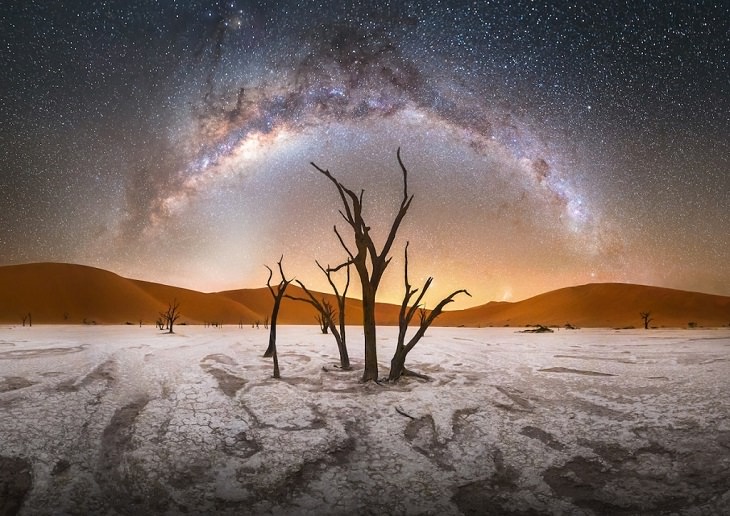
“The trees in Deadvlei have been dead for over 500 years. Located in Namib-Naukluft Park in Namibia, these saplings grew after local rivers flooded because of severe rainfalls, but died after the sand dunes shifted to section off the river.”
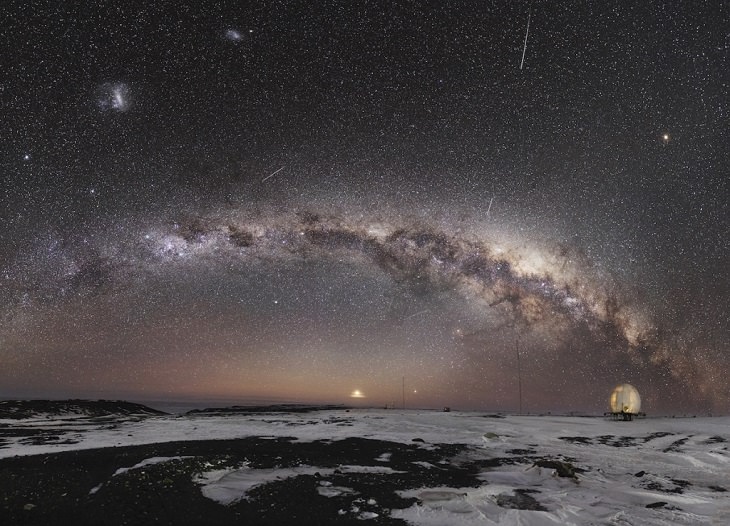
“This was a very special night full of emotions that I tried to capture in this photograph. Planets like Venus, Jupiter, Saturn, and Mars, always attract my attention. The galactic center was about to hide, among thousands of other stars in composition with the snowy Antarctic landscape.”
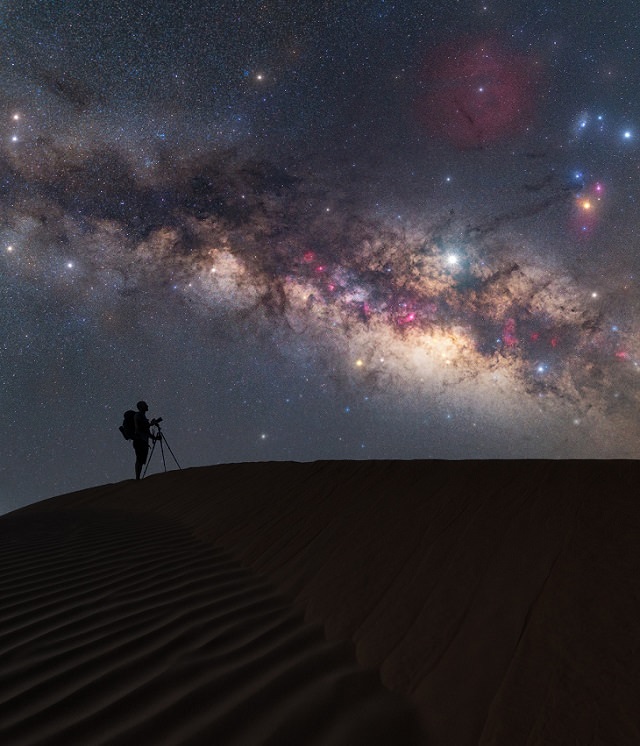
“Describing this place in words or pictures is not easy because there are many emotions you can feel spending a night in the heart of the desert. Staying in the middle of nowhere, hundreds of miles away from civilization and with no electricity, cellular network, or water certainly puts you to the test. Shooting with your group, you can feel the emotion of sharing moments of humanity, even with those who you don’t know, being present, and forgetting about the daily routine.”
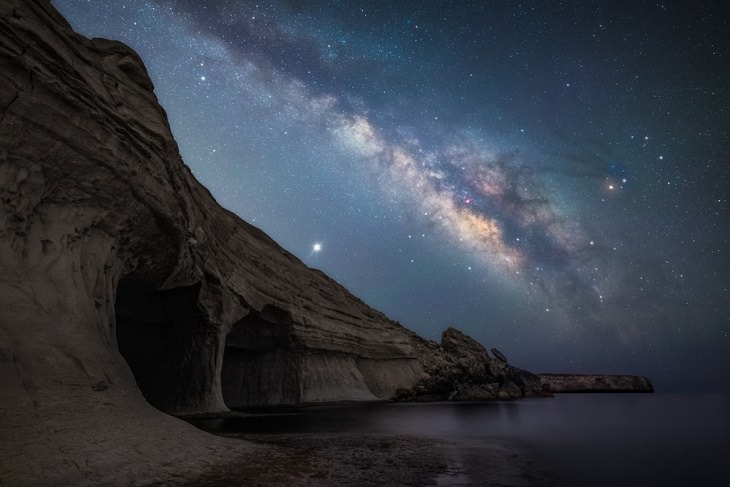
“I wanted to capture the core of the Milky Way over the entrance to ‘Ta Marija’ cave for years. I tried it several times previously, but I was unable to capture an image I was happy with. Last July, I headed back with a friend of mine to try to get a better shot, and finally make this dream a reality.”
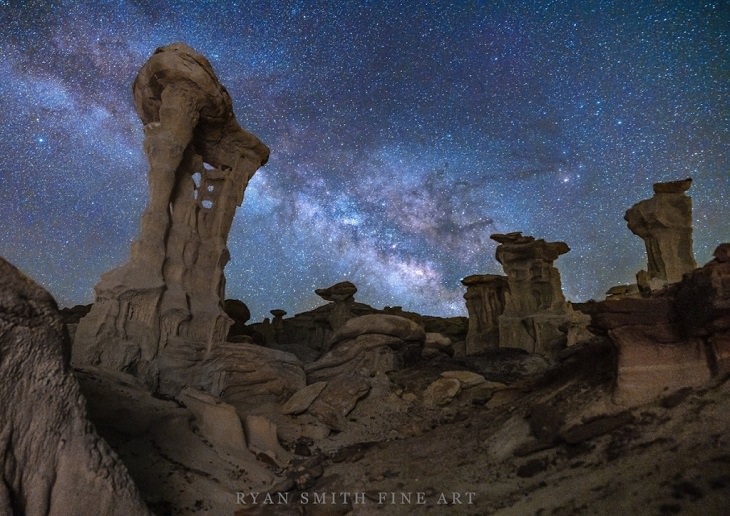
“I took this picture with the Canon EOS Ra; a mirrorless astrophotography camera that has a built-in infrared-cutting filter (positioned immediately in front of the CMOS imaging sensor), which permits approximately 4x as much transmission of hydrogen-alpha rays vs. standard digital cameras. This allows us to capture more details of the night sky and the Milky Way, and really makes a difference in astrophotography.”
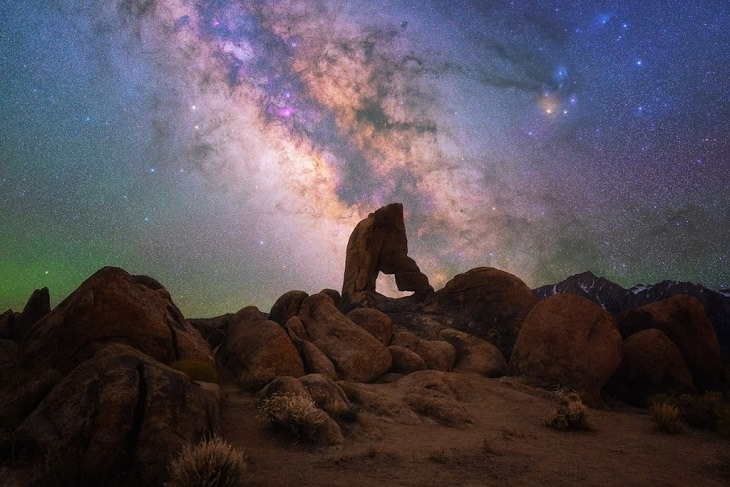
“When I’m traveling through California, I always make sure to stop by the Alabama Hills. This is one of the most iconic locations in the western USA, with its incredible snow-capped Sierra Mountains, unique rock formations, and dusty roads.
In June, I spent a few nights camping in the desert beneath the stars. Once the Milky Way was shining brightly overhead, I wandered through the brush and found this unique arch.”
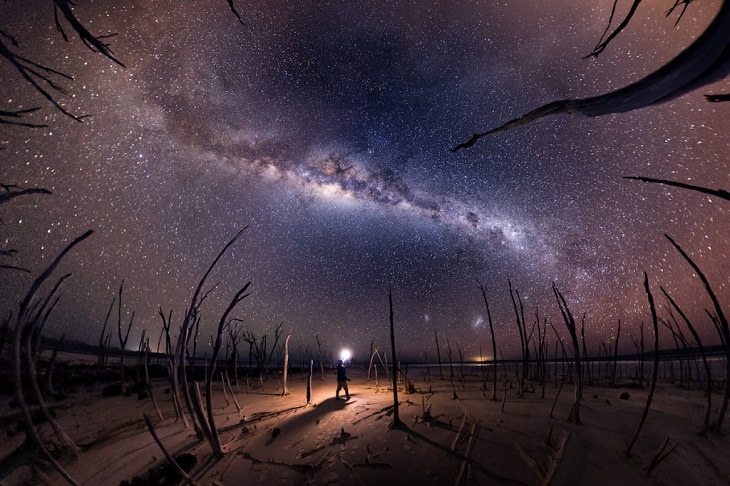
“Dumbleyung Lake is a salt lake located in Western Australia. The lake is surrounded by hundreds of trees that have died due to the salt levels, and, on a calm night, all the stars reflect off the water. For this image, the dead trees gave me the idea of capturing them clawing up at the sky—the fish-eye panorama turned out better than expected, as the trees almost looked like tentacles. The location is very dark, so with no moonlight available, I used my self-portrait style with the figure holding the light (now a bit clichéd) to create more depth in the image as a solitary figure standing amongst the dead trees.”
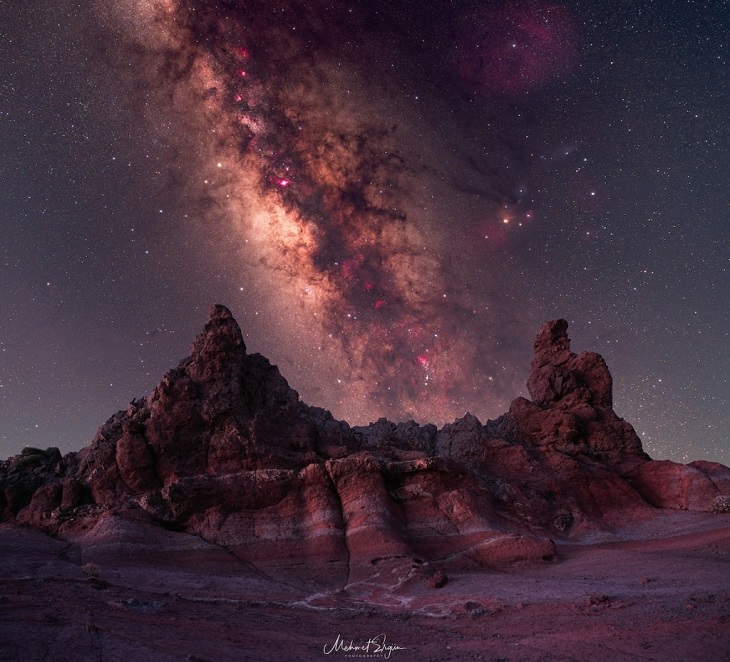
“This photo was taken on one of my favorite islands: Tenerife. This is an island with unlimited possibilities, where you can enjoy nature in all its glory. In particular, the night sky over Tenerife is renowned worldwide for its excellent conditions for stargazing and astrophotography.”
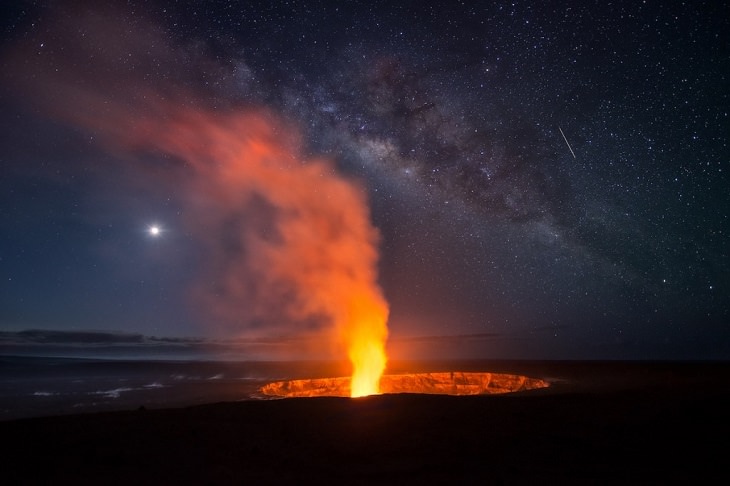
“During my trip to Hawaii, we were typically up around 2:30 am, and playing all day and well past sunset out on the lava flows. On this particular evening, after shooting the sunset, we checked Stargazer and saw that around 3-4 am, many of the planetary elements would be aligning around the plume at the Halema’uma’u crater.
Even though the skies were covered during most of the night, we happened to be at the right time to capture the lava and the Milky Way.”
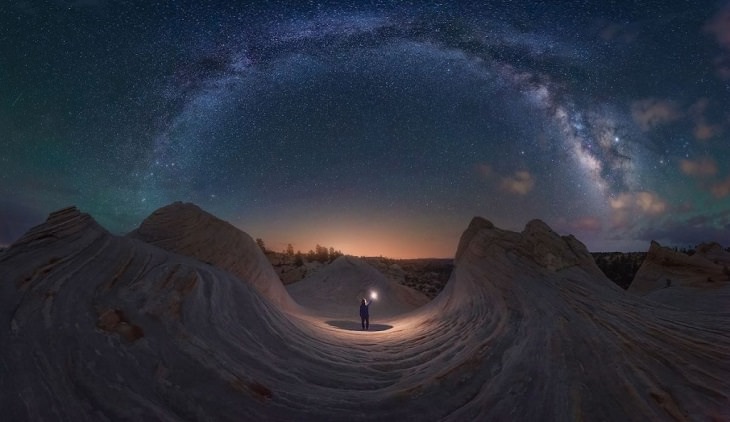
"After visiting this location in 2017, it became my personal obsession to take a photo there, mainly because I couldn’t take any night shots since the place was very remote.
In May, I decided to go back and try to take the photo I had in mind. After a very cloudy night, just before dawn, the sky opened up, and a spectacular starry sky gave me the opportunity to take this picture with the arch of the Milky Way above the “wave” of rock that seems to surround the two hills, creating an almost perfect circle and allowing me to get the photo I had dreamed of."
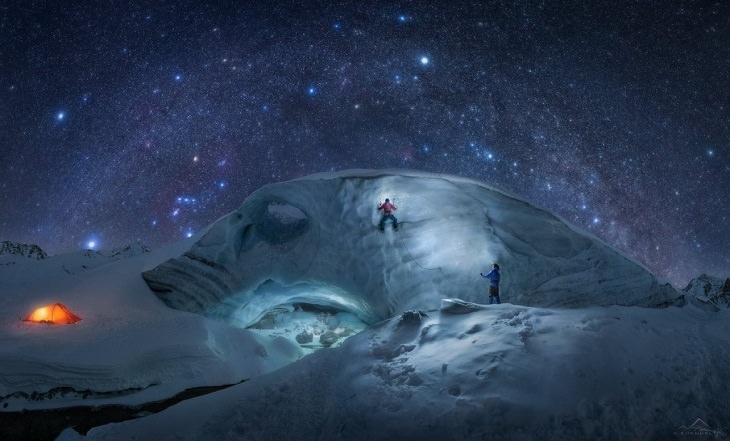
“Although the Milky Way during the winter and early spring are often ignored in Astro-landscape photography, I really love the bright stars (some of the brightest of the night sky), colorful constellations, and fainter elements of this part of our galaxy when the galactic core is beneath the horizon.”
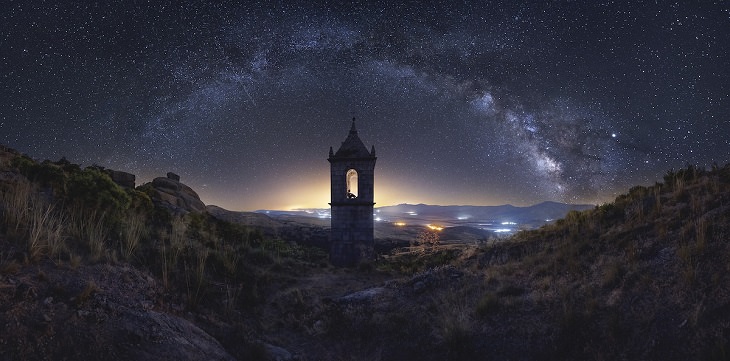
“The idea of shooting an old monastery under the Milky Way in the Spanish mountains was just hanging around my head for months. I was fascinated by the idea of planning this image; having the Milky Way arch above the ancient and lonely bell tower. The monastery was an Augustinian convent founded in 1504 and called the “Monastery of Our Lady of the Crag”. A few hundred miles drive followed by a long walk and a challenging climb and bushwhack ended in this beautiful and magical place where I could capture our galaxy arch.”